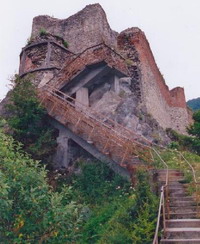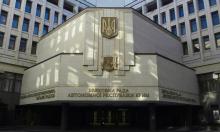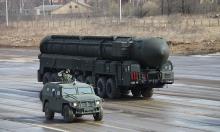Government defends its decision to return "Dracula's Castle" to members of former royal family
The government stands its ground on returning "Dracula's Castle" to members of the former royal family, with the culture minister insisting Thursday that the property's restitution had been legal.

A legislative panel had argued the restitution was unlawful because of procedural errors.
The castle, famous for its links to a 15th-century medieval ruler who inspired "Dracula," was confiscated from its owners in 1948 by the former communist regime.
Culture Minister Adrian Iorgulescu said the castle was legally returned last year to heirs of Princess Ileana, its last owner.
"We are convinced that the property restitution was done correctly," and was approved by both the Justice Ministry and a national agency for returning confiscated assets, he said.
The opposition-dominated legislative panel had argued, however, that the castle was returned improperly.
"How is it possible that the restitution of a national treasure be done by a museum administering the castle," said Dumitru Puchianu, a lawmaker with the Democratic Party, which was recently expelled from the Cabinet.
Prime Minister Calin Popescu Tariceanu backed his minister Thursday, saying "when it comes to property confiscated by the communists, I as a prime minister don't have any problems with returning it."
The 14th-century fortress is associated with Prince "Vlad the Impaler," whose cruelty inspired novelist Bram Stoker's creation, the vampire Count Dracula. Legend has it that Vlad, who earned his nickname because of the way he tortured his enemies, spent one night there.
The new owner, New York-based architect Dominic Habsburg, signed a deal pledging to keep the castle open to visitors for three years. He later offered to sell it to local authorities for 60 million EUR(US$80 million). His lawyer also rejected the lawmakers' criticism.
"The (lawmakers panel's) decision is wrong, it's a political one and it proves that private property is not respected in Romania," Corin Trandafir said.
The fortress, perched high on a rock and surrounded by snowcapped mountains in southern Transylvania, is one of Romania's top tourist attractions and is visited by 400,000 people each year.
In recent years, the castle - complete with occasional glimpses of bats flying around its ramparts in the twilight - has attracted movie makers as a backdrop for films about Dracula and other horror themes.
Subscribe to Pravda.Ru Telegram channel, Facebook, RSS!





